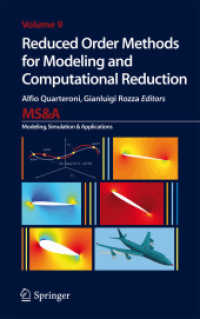Full Description
Develop your students theoretical and practical marine science skills for first examination in 2022. Following extensive classroom research, this Coursebook has been revised to help students explore the wonders of the underwater world. Written in accessible language for the international learner this book helps students develop essential skills. Extended international case studies take you to the heart of marine ecosystems, with discussion questions that help students apply their knowledge and dive deeper into real-world contexts. Projects give students the opportunity to work collaboratively to explore and present topics. Exam-style questions encourage students to track their understanding with dedicated support for exam command terms.
Contents
How to use this series; How to use this book; Introduction; Introduction to command words; Chapter 1: Water; 1.1 Particle theory and bonding; 1.2 Solubility in water; 1.3 Density and pressure; Chapter 2: Earth processes; 2.1 Tectonic processes; 2.2 Weathering, erosion and sedimentation; 2.3 Tides and ocean currents; Chapter 3: Interactions in marine ecosystems; 3.1 Interactions; 3.2 Feeding relationships; 3.3 Nutrient cycles; Chapter 4: Classification and biodiversity; 4.1 The classification of marine organisms; 4.2 Key groups of marine organisms; 4.3 Biodiversity; 4.4 Populations and sampling techniques; Chapter 5: Examples of marine ecosystems; 5.1 The open ocean; 5.2 The tropical coral reef; 5.3 The rocky shore; 5.4 The sandy shore; Practical skills; 1 Experimental planning including making estimates, predictions and hypotheses; 2 Presentation of data and observations; 3 Evaluation of procedures and data; 4 Analysis of data and conclusions; Chapter 6: Physiology of marine organisms; 6.1 General cell structure; 6.2 Movement of substances; 6.3 Gas exchange; 6.4 Osmoregulation; Chapter 7: Energy; 7.1 Photosynthesis; 7.2 Chemosynthesis; 7.3 Respiration; Chapter 8: Fisheries for the future; 8.1 Life cycles; 8.2 Sustainable fisheries; 8.3 Marine aquaculture; Chapter 9: Human impacts on marine ecosystems; 9.1 Ecological impacts of human activities; 9.2 Global warming and its impact; 9.3 Ocean acidification; 9.4 Conservation of marine ecosystems; Glossary; Index







